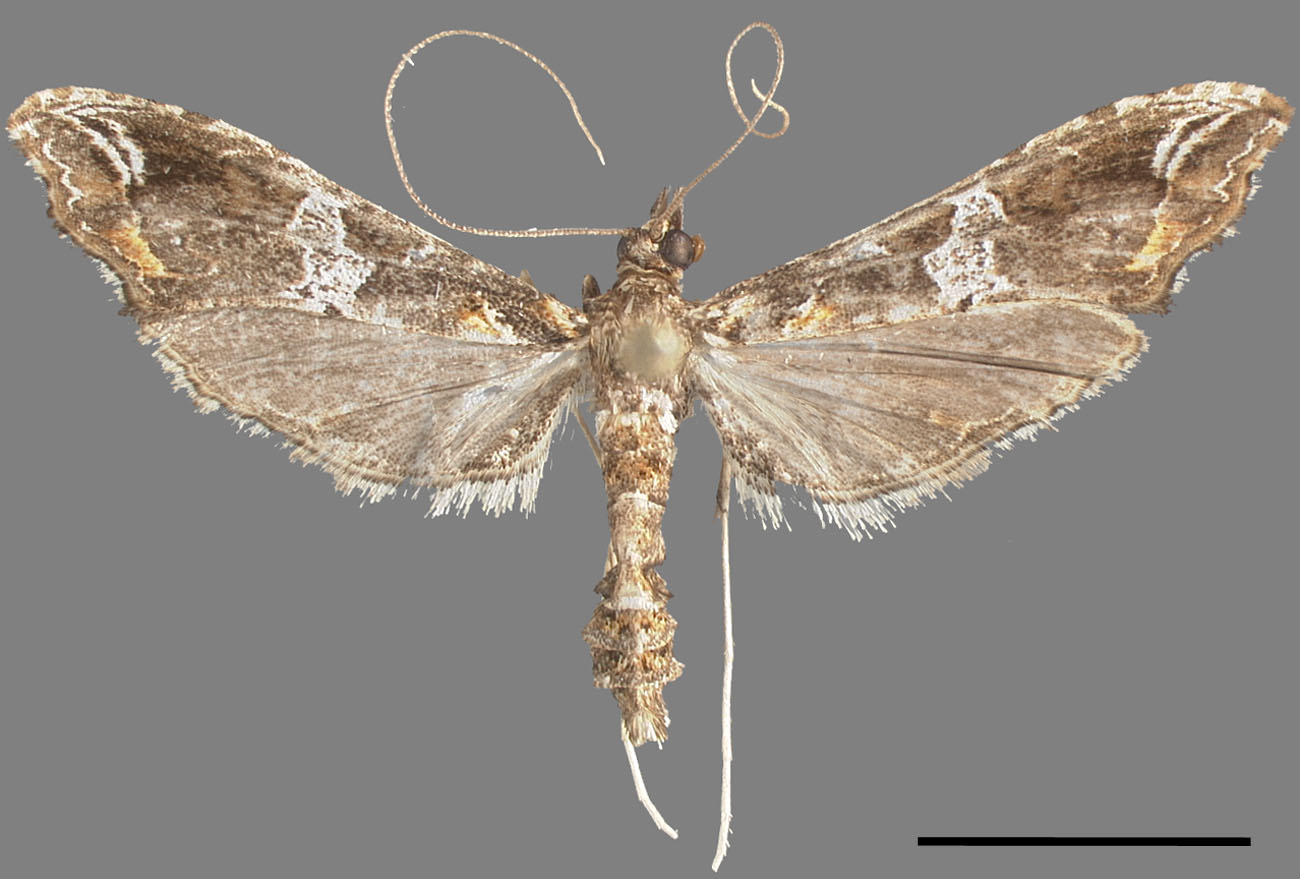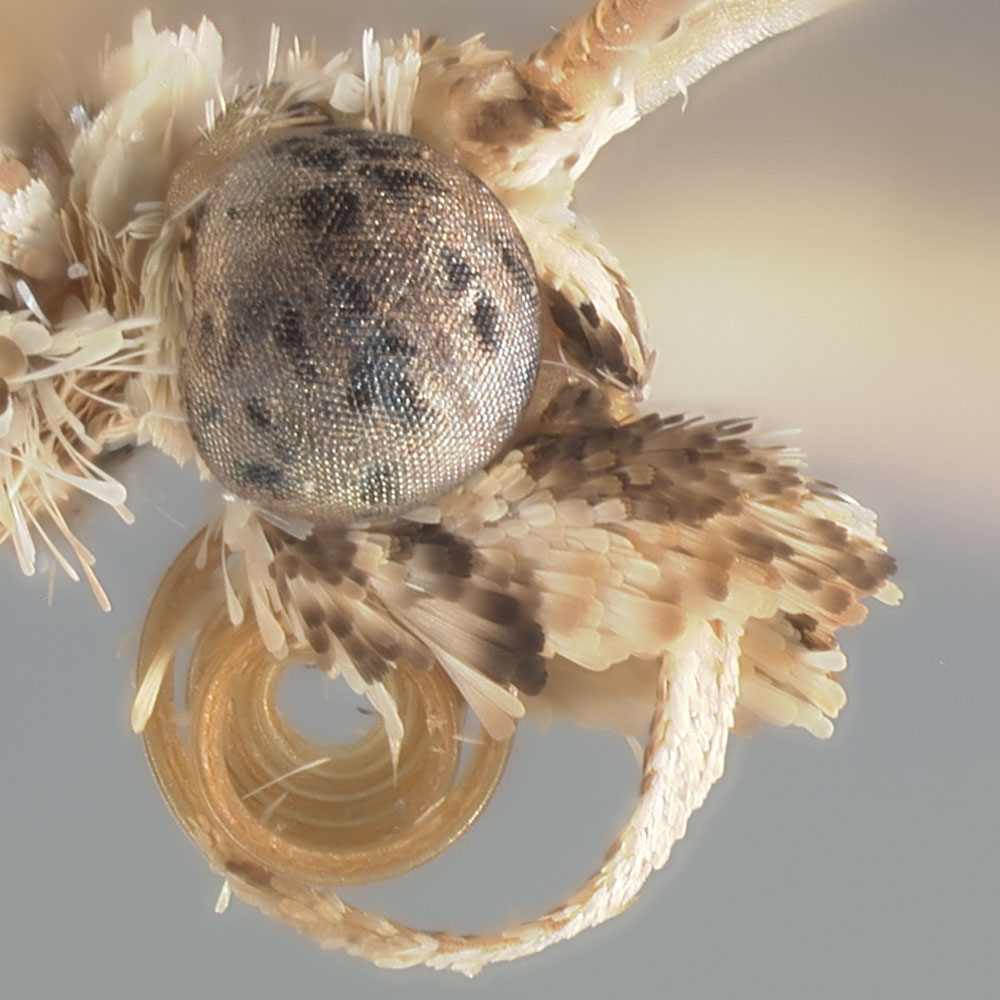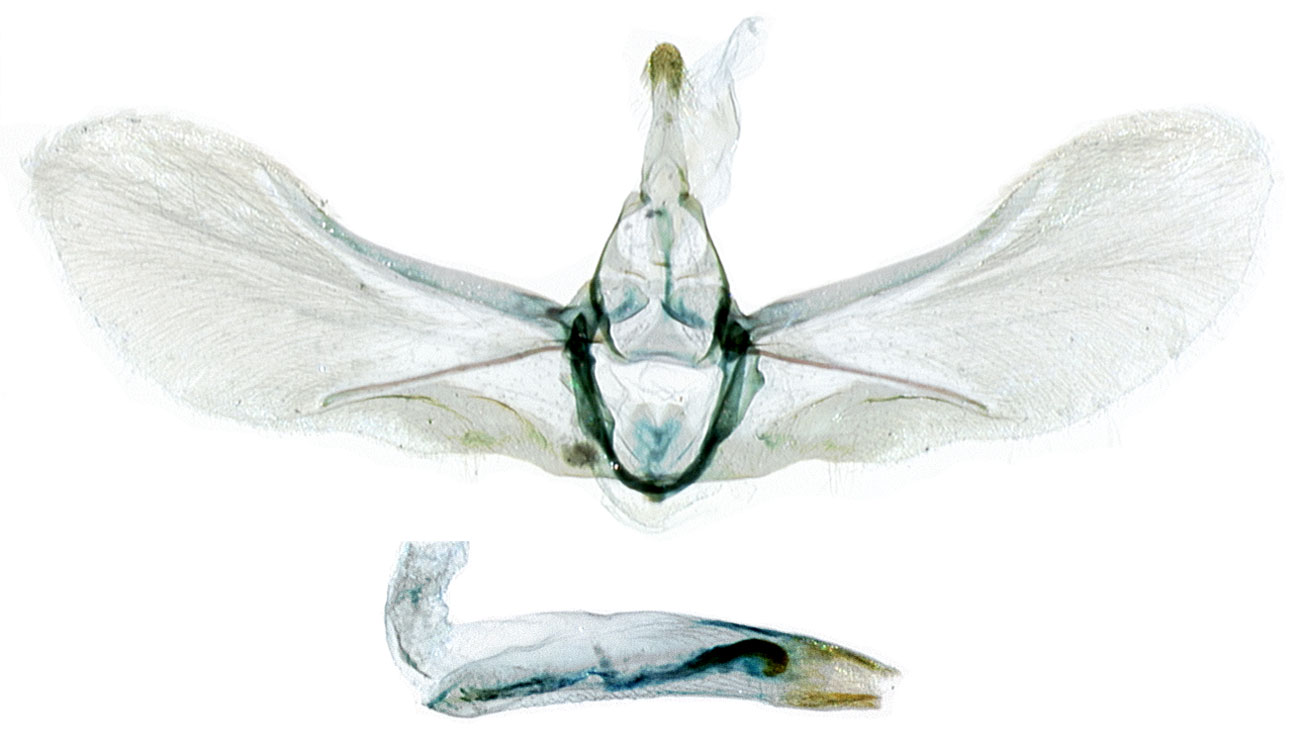Lineodes triangulalis
|
Lineodes triangulalis male habitus (Florida). Terhune S. Dickel Collection. Scale = 5 mm. |
|
Lineodes triangulalis female habitus (Texas). Scale = 5 mm. |
|
Lineodes triangulalis male habitus (Texas). Scale = 5 mm. |
|
Lineodes triangulalis head. |
|
Lineodes triangulalis male genitalia. |
|
Lineodes triangulalis female genitalia. |
Name
Lineodes triangulalis Möschler, 1890
Common name: none.
Original combination: Lineodes triangulalis Möschler, 1890
Synonyms:
- Lineodes cyclophora Hampson, 1913
- Lineodes triangularis (Walsingham, 1915) (misspelling)
- Lineodes serpulalis Druce, 1895 (nec Lederer, 1863)
Alternative combinations: none.
Classification: Pyraloidea, Crambidae, Spilomelinae, Leucinodes group
Adult recognition
Forewing length: 7.7–9.7 mm, narrow. The wings are mostly dark brown with narrow white medial and antemedialAntemedial:
The dominant line across the wing closer to the wing base.
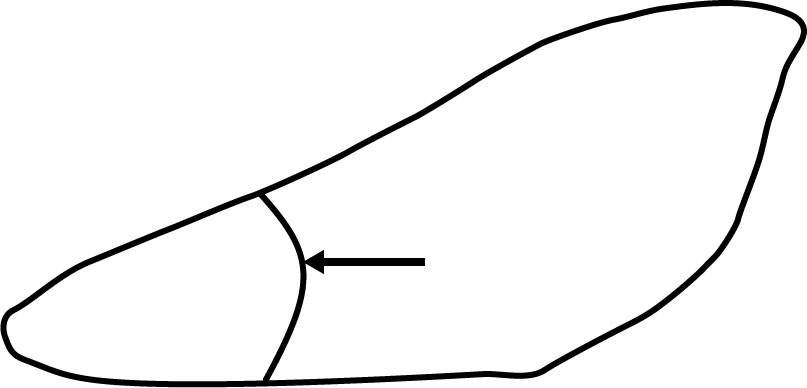 areas. The dirty white medial streak crosses the wing from the costaCosta:
areas. The dirty white medial streak crosses the wing from the costaCosta:
(1) The anterior margin of the wing.
(2) In the male genitalia, the dorsal margin of the valva.
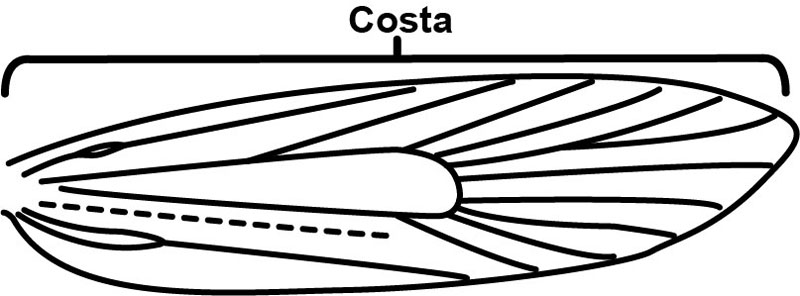 , but it is not a longitudinal arc. The terminal area has yellow scales. In the male genitalia, the longitudinal fibulaFibula:
, but it is not a longitudinal arc. The terminal area has yellow scales. In the male genitalia, the longitudinal fibulaFibula:
Any projection on the face of the valva (not including the saccular process, if any).
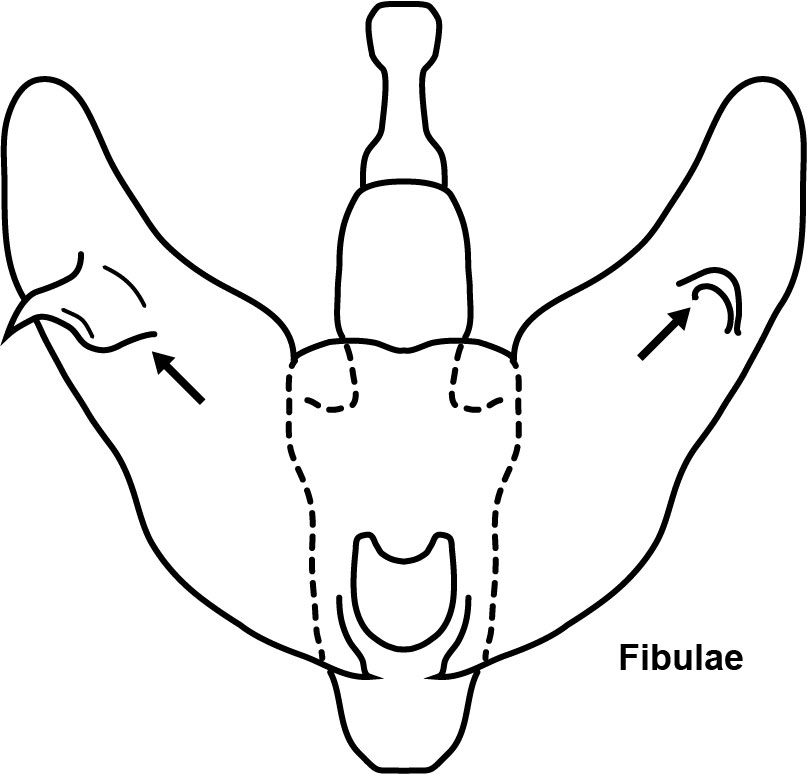 is only a ridge, bulbous near the base and apically narrow, and it crosses obliquely to the sacculusSacculus:
is only a ridge, bulbous near the base and apically narrow, and it crosses obliquely to the sacculusSacculus:
The ventro-basal area of the valva.
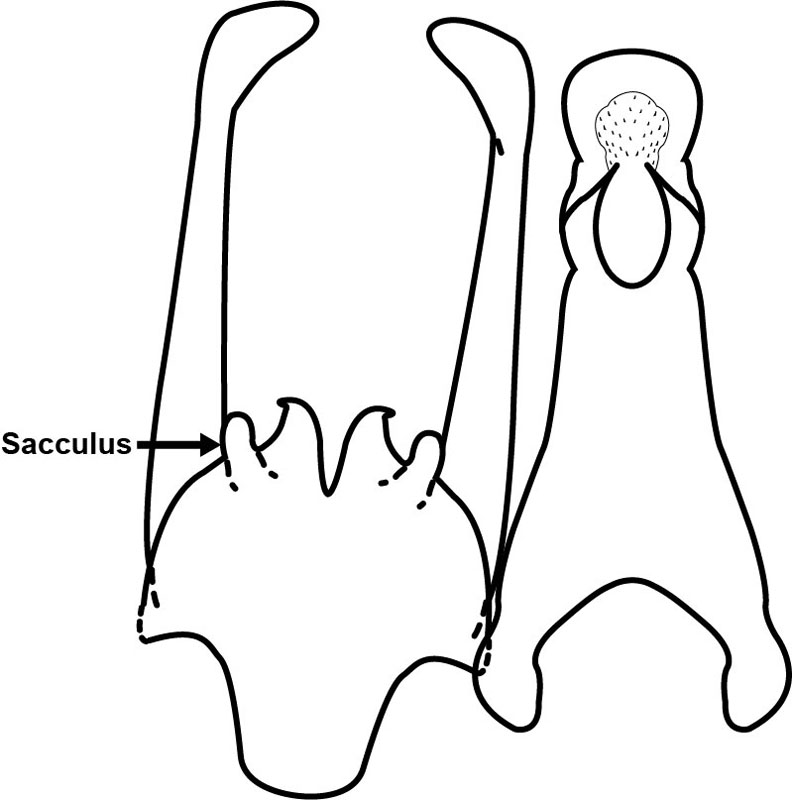 . The cornutusCornutus:
. The cornutusCornutus:
A usually spine-like sclerite visible within the phallus.
 is flat and hook-shaped. The female genitalia are unlike other Lineodes species but like Atomopteryx in that they have a long antrumAntrum:
is flat and hook-shaped. The female genitalia are unlike other Lineodes species but like Atomopteryx in that they have a long antrumAntrum:
Posterior section of the ductus bursae, posterior of the colliculum.
 (with the apophyses not reaching the colliculumColliculum:
(with the apophyses not reaching the colliculumColliculum:
The collar-like sclerite around the posterior end of the ductus bursae.
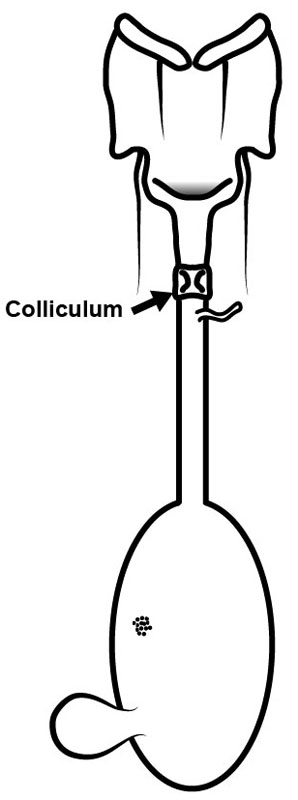 ) and a very short ductus bursaeDuctus bursae:
) and a very short ductus bursaeDuctus bursae:
The usually narrow duct between the ostium and antrum and the corpus bursae.
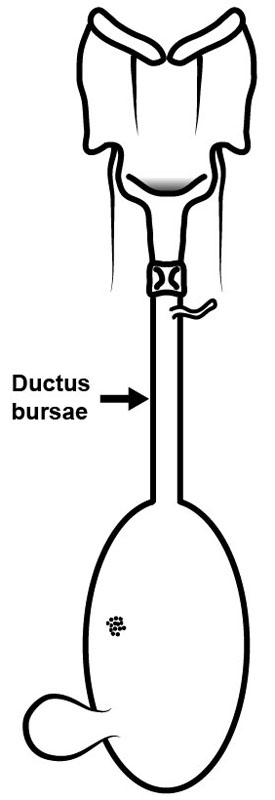 with a swelling around the colliculumColliculum:
with a swelling around the colliculumColliculum:
The collar-like sclerite around the posterior end of the ductus bursae.
 .
.
Immature stages
Described by Dyar (1901) as similar to L. integra, but with pinacula slightly more elevated and black-shaded, especially the subdorsal pinaculumPinaculum:
In the larva, a raised, blister-like area that is often but not necessarily pigmented. They normally surround a seta, or if more than one seta, they are considered to be fused. Some taxa, especially internally boring larvae, may have extra pinacula without setae.
.
Similar species
The other species of Lineodes in North America either have lighter markings or have the medial white area of the forewing arc-shaped or triangular, not narrow and transverse. The closely related Lineodes venezuelensis Amsel occurs in continental South America, and records of L. triangulalis may refer to this. Its wing pattern is nearly identical. The longitudinal valve ridge is slightly swollen at the apex, and the cornutusCornutus:
A usually spine-like sclerite visible within the phallus.
 is absent. In females, the ductus bursaeDuctus bursae:
is absent. In females, the ductus bursaeDuctus bursae:
The usually narrow duct between the ostium and antrum and the corpus bursae.
 is not so swollen around the colliculumColliculum:
is not so swollen around the colliculumColliculum:
The collar-like sclerite around the posterior end of the ductus bursae.
 . This species is a significant pest of Capsicum annuum in Peru, where it attacks buds, fruit, and leaves.
. This species is a significant pest of Capsicum annuum in Peru, where it attacks buds, fruit, and leaves.
Behavior
Reared by Dyar on the leaves of pepper plant. The leaf-feeding behavior is like that of L. integra (Dyar 1901Dyar 1901:
Dyar HG. 1901. Descriptions of some pyralid larvae from southern Florida. Journal of the New York Entomological Society 9: 19-24.).
Distribution
Caribbean and Central America, reaching into the extreme southern US, including Texas and Florida. Also in Puerto Rico, the Bahamas, Colombia, Cuba, Dominica, Guatemala, Honduras, Jamaica, Mexico, Trinidad, and Venezuela.
Hosts
Capsicum frutescens L. (pepper)
Comments
Lineodes triangulalis is found infrequently in the US. In Florida, the only specimen known since Dyar's raised lot was taken by T.S. Dickel on Big Pine Key in 1991. More specimens are known from southern Texas, especially Brownsville.
Literature
Dyar 1901Dyar 1901:
Dyar HG. 1901. Descriptions of some pyralid larvae from southern Florida. Journal of the New York Entomological Society 9: 19-24.
Wolcott 1948Wolcott 1948:
Wolcott GN. 1948 [1951]. The Insects of Puerto Rico: Lepidoptera. Journal of Agriculture of the University of Puerto Rico 32: 537-748.


